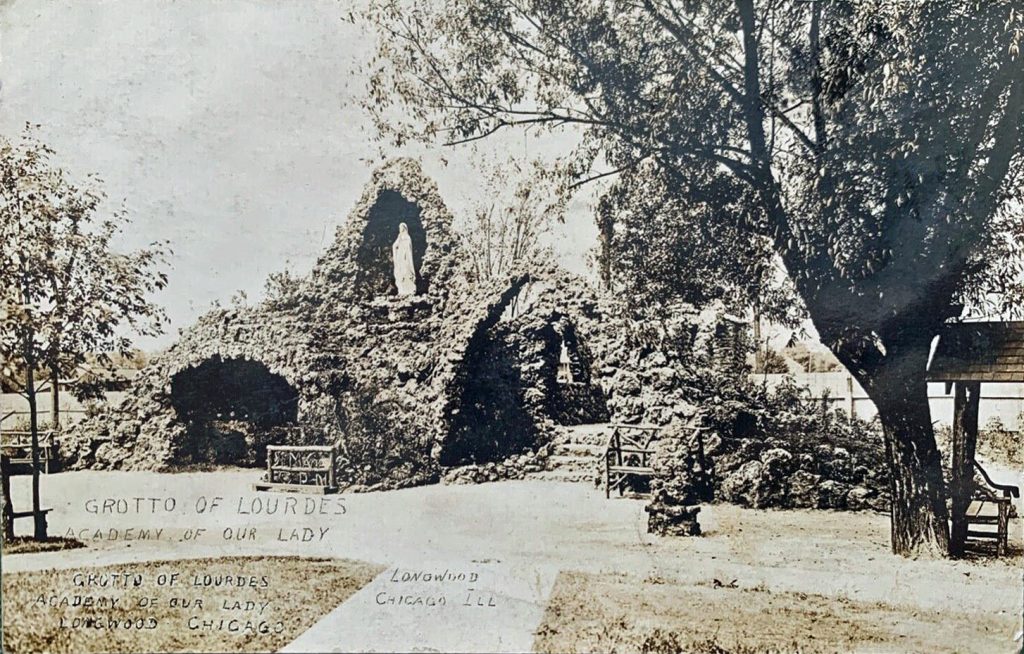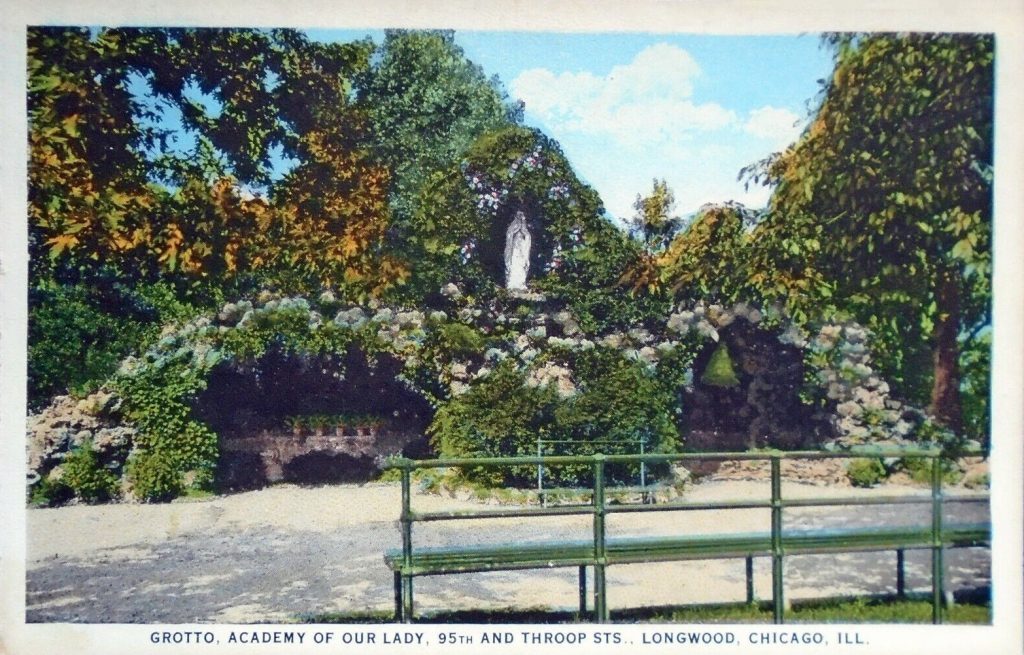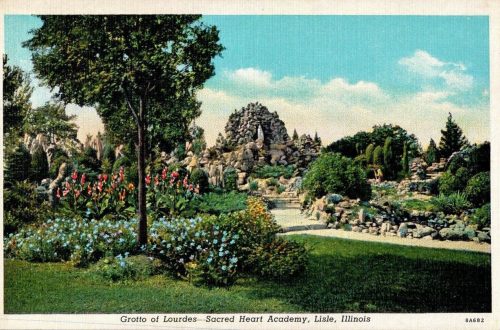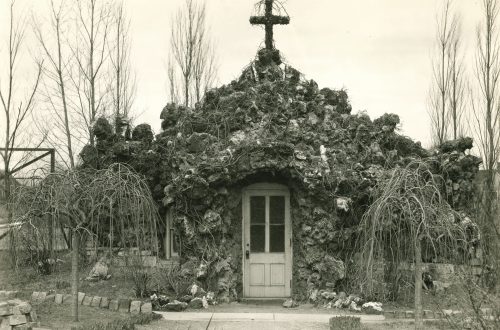Chicago, IL: Longwood Academy of Our Lady

The Grotto of Lourdes at the Longwood Academy of Our Lady in Chicago was built in 1908, by German-born grotto builder Edward J. Koenig (1886-1942), according to a newspaper article about its construction.
Koenig had emigrated to the US in 1906, arriving in Crowne Point, Indiana at age 20 to stay with his uncle, who was a priest in the area. A native of Brilon in North Rhine-Westphalia in Germany, he evidently trained to build grottos as well as to lay out landscapes for estates.
A 1908 article had this account of the grotto’s dedication:
….An imitation of this grotto (at Lourdes, France), the largest in the United States was dedicated yesterday afternoon in the grounds of the Academy of Our Lady at Ninety-fifth and Throop streets. The ceremonies were attended by the clergy of several cities, and were conducted by the Rt. Rev. Mgr. P. M. Abbelen of Milwaukee assisted by the Rev. Father Mahoney of Kankakee, the Rev. Father Bleckman of Michigan City, the Rev. Father J. A. McCarthy, and the Rev. Father S. P. Brennock of this city.
Shrine in Grotto’s Center. The structure stands thirty feet high and is made of rocks which are petrified vegetation. These rocks are terms “drop stones.” In width it is 100 feet and it is 40 feet long. A statue of the Virgin Mary is placed twenty-four feet above the level in a niche. On the south side of the grotto is a cave wherein there is constructed an altar from which water flows. On the north side, after walking through an arch about twenty feet, one reaches the shrine of St. Anne.
Decorations of flowers and potted plants were scattered about the monument, which was the architectural work of Edward Koenig of Germany. The ceremonies were elaborate, and a chorus of several hundred children sang hymns. Sisters from the various orders also participated.
Grotto Stands in Park. The grotto is located in the rear of the institution, which is surrounded by twelve acres of land, which hitherto has been little more than prairie land. But it has been transformed, and now the place is a veritable park, as a setting for the grotto. It also affords an outing place for the Inmates of the academy. Paths have been macadamized and several miniature structures built in imitation of the Rhine country ruins stand near the bank of a lake, which is 12,000 feet square, and in which gondolas can be manipulated safely.
Chicago Tribune, May 25, 1908
As the article mentions,






